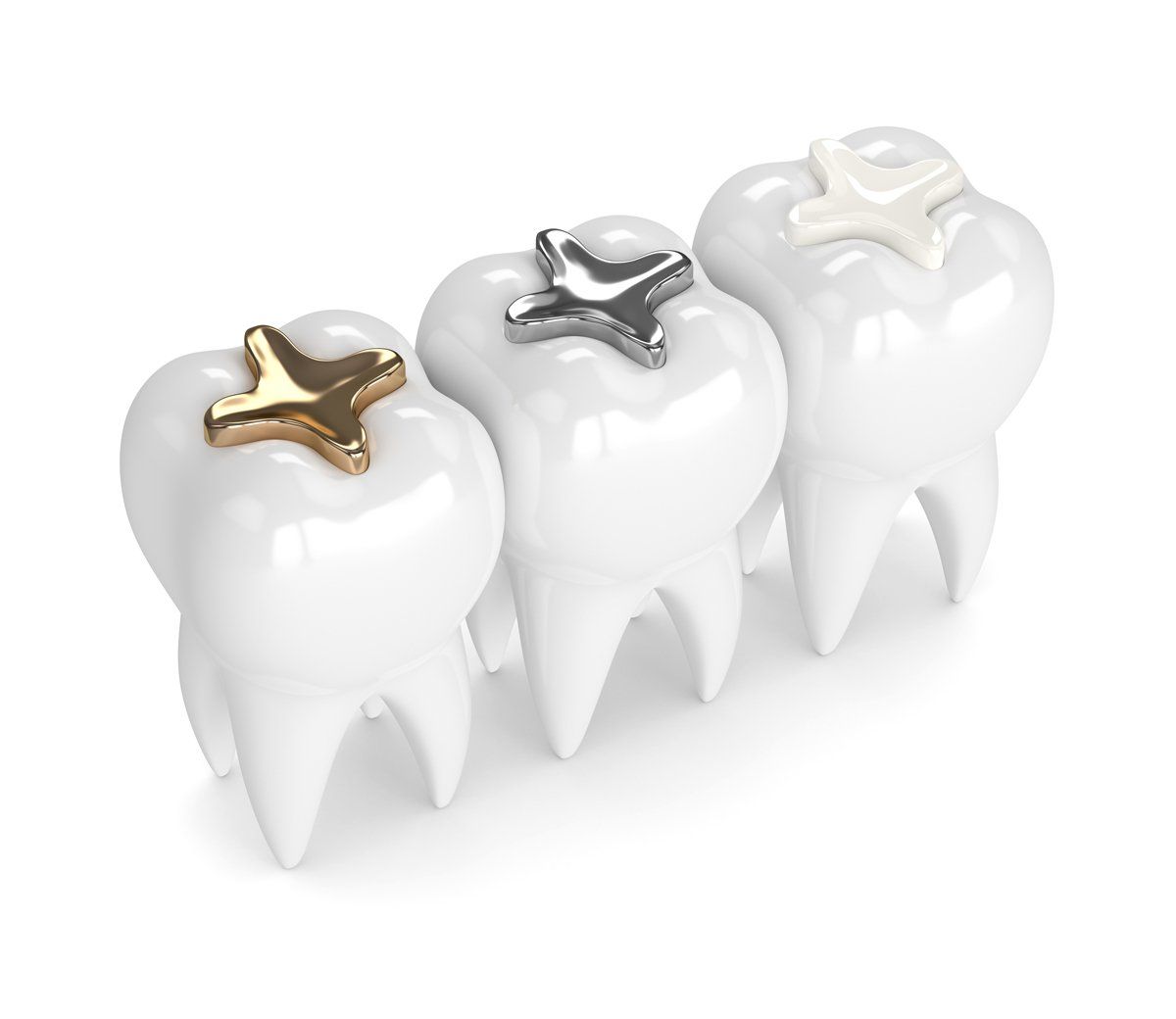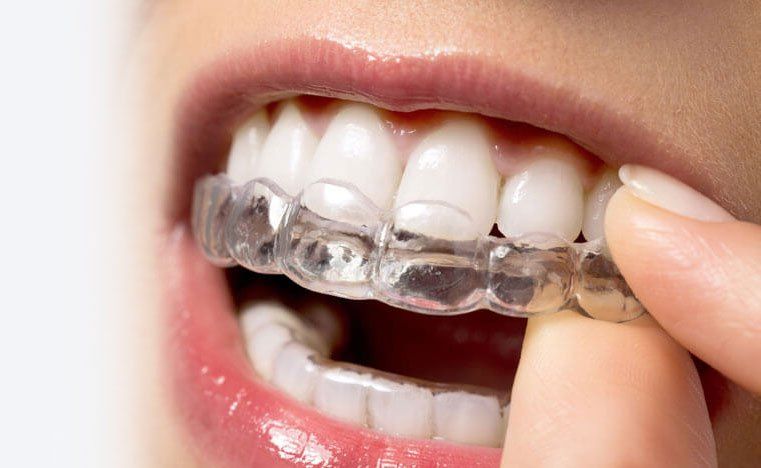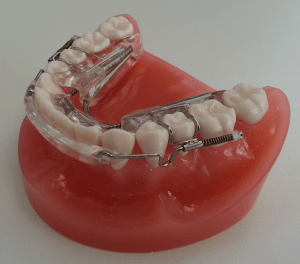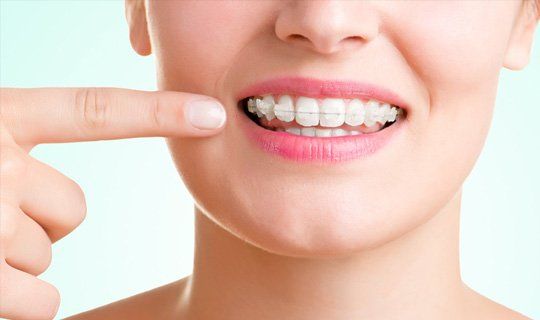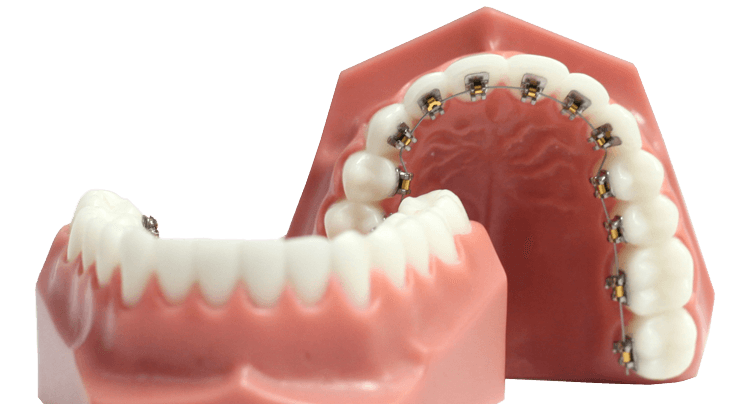Book Cosmetic Dentistry Treatments In St Albans
Book an Appointment At Alexander House
Book Cosmetic Dentistry Treatments In St Albans
Book An Appointment At Alexander House
BOOK AN APPOINTMENT TODAY
Cosmetic Dentistry Treatments
At Alexander House Dental Practice we provide the following cosmetic dentistry treatments:

WHITE FILLINGS
Make Your Teeth Look Healthy
If you require a filling in your tooth, a cosmetic option would be to choose a white filling material that matches the shade of your surrounding natural teeth.
You can also have any existing metallic fillings replaced with tooth-coloured or ‘white’ fillings. This will allow you to smile without a metallic glint in sight, giving your teeth a more natural appearance overall. Here is how white fillings work:
- This is a safe procedure that entails the removal of any decay from your tooth, and taking out the metal or amalgam fillings if you are having them replaced.
- The new filling is made from a very hard tooth-coloured substance and will withstand the forces in your mouth when you bite and chew over a long period of time.
- The restoration is completed in one visit and your fillings will not be visible when you smile.
Life benefits:
- Natural-looking restoration.
- Improved cosmetic appearance of filled teeth while still being able to bite and chew as usual.
- Hard-wearing restorative solution.
TEETH WHITENING
Get ready to Zoom!
Zoom! is a scientifically developed tooth whitening procedure. It is safe, effective and fast. In a single 90-minute appointment your teeth will become dramatically whiter. Zoom! Chairside Whitening is ideal for anyone looking for immediate results. The convenience of Zoom! in comparison to days of wearing trays or strips, makes it the obvious choice for the busy individual.
The
Zoom! In-office Whitening System will make your teeth dramatically whiter in just 45 minutes. The procedure is simple. It begins with a short preparation to cover your lips and gums, leaving only your teeth exposed. The
Zoom! dentist then applies the proprietary
Zoom!
Whitening Gel, which was designed to be used with a specially designed light. The
Zoom! light and gel work together to gently penetrate your teeth, breaking up stains and discolouration. With proper care your smile will sparkle for years.
-
What is Zoom! tooth whitening?
Zoom! is a bleaching process that lightens discolouration of enamel and dentine.
-
What causes tooth discolouration?
There are many causes. The most common include ageing and consumption of staining substances such as coffee, tea, colas, tobacco, red wine, etc. During tooth formation, consumption of tetracycline, certain antibiotics or excessive fluoride may also cause tooth discolouration.
-
Who may benefit from tooth whitening?
Almost anyone. However, treatment may not be as effective for some as it is for others. Your dental professional can determine if you are a viable candidate for this procedure through a thorough oral exam, including a shade assessment.
-
Is whitening safe?
Yes. Extensive research and clinical studies indicate that whitening teeth under the supervision of a dentist is safe. In fact, many dentists consider whitening the safest cosmetic dental procedure available. As with any tooth whitening product. Zoom! is not recommended for children under 16 years of age and pregnant or lactating women.
-
How long do the results last?
By following some simple post whitening care instructions, your teeth will always be lighter than they were before. To keep your teeth looking their best. we recommend flossing, brushing twice daily, and occasional touch-ups Nite White gel. These are professional formula products designed specifically to keep your teeth their brightest. They are available only through your dentist.
-
How does the Zoom! In-office system work?
The Zoom! light activated whitening gel's active ingredient is Hydrogen Peroxide. As the Hydrogen Peroxide is broken down, oxygen enters the enamel and dentine, bleaching coloured substances while the structure of the tooth is unchanged. The Zoom! light aids in activating the hydrogen peroxide and helps it penetrate the surface of the tooth. A study has shown that use of the Zoom! lamp increases the effectiveness of the Zoom! gel by 26% or more, giving an average improvement of eight shades.
-
What does a patient experience during the Zoom! In-Office Procedure?
During the procedure, patients may comfortably watch television or listen to music. Individuals with a strong gag reflex or anxiety may have difficulty undergoing the entire procedure.
-
How is exposure to the Zoom! light controlled?
The Zoom! procedure requires that all soft tissue in and around the mouth be protected. The dental professional is required to monitor the procedure to insure any exposed skin or tissue is isolated and protected. Protective eyewear is required during the procedure.
Light sensitive individuals, including those undergoing PUVA therapy (Psoralen+UV Radiation) or other photo-chemotherapy or patients with melanoma, should not undergo the Zoom! in-office procedure. Also, patients taking any light sensitive drugs or substances, whether over the counter, prescription or homoeopathic, should consult their primary care physician prior to the procedure. Anyone who is not eligible for Zoom! Chairside Whitening for these reasons may be an excellent candidate for Zoom! Take-Home.
-
How long does Zoom! Chairside Whitening take?
The complete procedure takes less than an hour. The procedure begins with a preparation period followed by 45 minutes of bleaching. (A cleaning is recommended prior to the actual Zoom! whitening session.)
-
Are there any side effects?
Sensitivity during the treatment may occur with some patients. The Zoom! light generates minimal heat which is the usual source of any discomfort.
On rare occasions, minor tingling sensations are experienced immediately after the procedure, but always dissipate.
VENEERS
Get That Smile
Veneers are thin, custom-made tooth facings made of porcelain or composite materials designed to cover the front side of a tooth to improve the overall appearance of the teeth. They are mainly used to:
- correct the length and shape of teeth according to the aesthetic and functional needs of the teeth.
- close gaps between teeth where orthodontic treatment is not possible.
- mask darker teeth in cases where whitening options have been exhausted.
- restore partially broken-down or worn teeth.
- widen narrow smiles where orthodontic treatment is not possible.
There are two types of veneers. One requires minimal, or no, tooth preparation, and the other requires slightly more preparation which is confined to the enamel structure. The veneer is bonded to the enamel of the tooth. Several visits are necessary to complete the treatment.
Stages of Veneer Treatment
-
Initial Consultation
Our Treatment Coordinator will discuss with the patient all the options and solutions that could be available. This is an opportunity for the patient to discuss the dental problem informally and receive information on the various treatments. This is an important stage for the patient as it allows them to get a clearer idea of what might be involved without any commitment.
-
Dental Examination
A thorough clinical examination is conducted by the dentist. The suitability for veneers is assessed and any necessary photographs, radiographs and sometimes impressions for a diagnostic wax-up, are taken. Your dentist will also be able to advise on the choice of material, treatment sequence and any other concerns you may have. A detailed treatment plan will be developed, and the patient given time to consider their options.
-
Discuss different treatment options in complex cases
If multiple veneers are necessary, a separate appointment may be required to discuss options and choices after evaluating the photographs and diagnostic wax-up received back from the laboratory.
-
Trial Smile
A temporary smile is created using composite material from the diagnostic wax-up. This gives the patient a chance to see what final smile would look and feel like. The patient is given time to check the shape, length, colour and the feel of the new look. The patient has the opportunity to come back and have minor adjustments done to create their desired look. When the patient is happy with the new smile, this will form the template for the final veneers to be constructed. Records of this final temporary smile are sent to the laboratory for the technician to create the final veneers of the same shape, size and colour.
-
Preparation of the teeth
This involves reducing the thickness of the enamel (usually under local anaesthesia) followed by an impression or mould of the prepared tooth. This trimming of the tooth is required to create space for the veneer to be fitted. The mould taken is then sent to a laboratory where skilled technicians will fabricate the veneer. In the meantime, a temporary veneer is made and fitted onto the trimmed tooth.
-
Fitting appointment
The temporary veneer is removed and the tooth surfaces cleaned. The completed veneer is tried on the tooth for fit, bite and appearance. Finally, the veneer is bonded onto the prepared tooth. Usually a mouth guard is provided to wear at night-time to protect the veneers.
INVISIBLE BRACES
Orthodontic Technology
Recent advancements in orthodontic technology, invisible braces are fast becoming the method of choice for cosmetic reasons.The field is still advancing rapidly, and we keep up with the latest developments in order to offer our patients the best possible treatment and choice.
We use one of the following systems, depending on the specific needs and requirements of each patient. Sometimes a combination of these systems is required.
With all orthodontic treatment, retention is recommended for life to prevent relapse. Retention can come in the form of a wire bonded to the back of the teeth, or a removable clear plastic retainer.
TYPES OF ALIGNERS WE OFFER
-
Clear Aligners (Clearstep™)
ButtonMade of thin, clear plastic to the precise dimensions of your teeth, clear aligners are almost undetectable to the people around you. By exerting a gentle but constant force on your teeth, they are slowly moved to the desired positions. A series of different clear aligners is needed to produce the final result.
The full range of ‘invisible’ orthodontics will have minimal impact on your social life and career while having no dietary restrictions during treatment as the clear aligners are removable.
-
Inman Aligner™
ButtonThe Inman Aligner is a simple removable appliance used to align front teeth quickly and safely. It is ideal as a stand-alone treatment or to prealign teeth prior to further cosmetic options such as clear aligners, bonded fillings or minimal veneers.
The Inman Aligner has Nickel Titanium coil springs that power two aligner bows that gently oppose each other, guiding the teeth into their new position. These gentle forces are active over a very large range of movement, which is why the Inman Aligner works so quickly.
-
Six Month Smiles®
ButtonSix Month Smiles utilises unique clear brackets bonded to the teeth and tooth-coloured wires, whereas aligners are made of clear plastic and can be removed by the patient. This technique can be used in a wider range of cases than aligners. It has greater control over the outcome of the treatment and the desired tooth movements. Clear aligners are sometimes used after this treatment to achieve the final position.
-
Lingual Braces (STb Social 6)
ButtonSTb Social 6 Braces offer a discrete method of straightening teeth, and are completely invisible to others due to them being bonded to the back of teeth. This type of brace is perfect if you want to straighten your teeth discretely.
If you feel your smile would benefit from subtle adjustments or more moderate improvements without the worry of wearing conventional visible braces, STb Social 6 may be the orthodontic treatment you are looking for.
DENTAL IMPLANTS
Something to Smile About
Dental implants are fast becoming a popular choice for replacing missing teeth, filling gaps, restoring your chewing ability and your smile, and giving you back your confidence.
Dental Implants are titanium metal posts, secured into the bone in place of the natural tooth root, to provide permanent support for crowns, bridges and dentures. Advancing technology has improved both the materials and techniques used and getting dental implant treatment has never been easier or more comfortable.
Current dental implant treatments can change your life. From a single missing tooth to an entire set of teeth, dental implants restore your appearance, speech, nutrition, oral health, comfort, and self-esteem.
Benefits of Dental Implants
-
Replaces missing teeth without affecting healthy neighbouring teeth.
With dental implants, healthy teeth are not compromised. Crown & bridge dentistry requires grinding down healthy teeth leaving them at much greater risk for cavities and tooth failure.
-
Stops bone loss normally associated with missing teeth.
Dental implants, like natural teeth, stimulate the jaw and stop bone loss. Crowns, bridges and dentures address the short-term cosmetic problem of missing teeth but do nothing to stop bone loss.
-
Maintains natural, youthful appearance of the face and jaw.
When a tooth is lost, the jawbone beneath it begins to shrink (or atrophy) and becomes brittle from lack of exercise. Not only does losing a tooth affect your smile, it also changes the shape of your face causing you to look prematurely aged.
-
Restores natural smile.
Leading dental organizations recognize dental implants as the standard of care for tooth replacement.
-
Chewing ability is improved.
You can eat whatever you want, with confidence!
-
Have a comfortable, stable, implant-retained Denture.
Dentures become uncomfortable and unstable over time as the jawbone shrinks causing eating and speech problems. Implant-retained dentures provide two benefits: the denture is fixed to the implant preventing it from moving, and the implant maintains the jaw bone, so the denture will fit well for a longer period of time.
A crown is a cap that is placed over a tooth and held in place by dental adhesive or cement.
Crowns are used for several reasons:-
• as a protective cover for badly decayed teeth or fractured teeth
• as a permanent restoration for teeth with large fillings
• to correct problems in natural teeth like spacing, irregular shape or severe discolouration.
• as a temporary measure between the different stages of other treatments.
-
Materials used for Crowns.
Materials used for Crowns
There are three main types of materials used to construct crowns:-
• Porcelain bonded to metal alloy- Crowns constructed in this way have been tried and tested over many years. In many situations, they give the best combination of aesthetics, strength and durability. They are particularly suitable when the bite is strong or the teeth are very discoloured.
• Porcelain only - The main advantage of this type of crown is their ability to bond to tooth structure, giving it strength and support. It also gives a very natural-looking restoration. Recent developments in ceramic technology have led to improved strength using zirconia and pressed ceramics, and it is now possible to use porcelain-only restorations in both the front and back parts of the mouth.
• Gold alloy - Gold is one of the best metals to use due to its inert properties. When combined with other metals to form an alloy, its strength and durability is improved. Gold restorations are known for their comfort and longevity. They are mainly used where aesthetics is not the main concern.
DENTURES
Types Of Dentures
Partial Denture - This type of denture is used when a patient has only some missing teeth. It can be a permanent solution, but in some cases it is used as a temporary measure before other treatment is completed.
Complete Denture - When the patient has no natural teeth remaining, a complete denture is required. Complete dentures can also be constructed over dental implants. This helps the stability of the denture and improves the bite. As dental health has improved over the last few decades, we see less and less patients requiring complete dentures.
Overdenture - This can be a partial or complete denture, which covers over retained stumps of teeth, or dental implants. The main advantage is that the retained roots of the teeth (or implants) retain the bone levels in the jaw, and this helps to maintain the natural shape and appearance of the face.
Materials used in Dentures:
- Acrylic only - This is the most commonly used material and has been used for many years.
- Combination of Cobalt-Chrome Alloy and Acrylic - This construction is used when the patient has a particularly strong bite and the extra strength is needed.
What's Involved?
-
Initial Appointment
We do a general check of the patient's oral health and the condition of their soft tissues to assess the suitability of the various different options. All options are explained and discussed with the patient, and time is given for the patient to consider the recommended treatment plan.
-
First Treatment Appointment
The key to successful dentures is accurate measurement of the patient's mouth. We take an initial impression using standard trays which will be used to construct a model of the shape of the jaw. This is then used to construct a custom-made tray that will only fit that patient. This will be used in the next appointment to take a more accurate impression.
-
Second Treatment Appointment
Using the specially constructed tray, a secondary impression is taken to get a precise mapping of the jaw for the patient. This enables a much more accurate model to be made and allows the technician to construct an excellent fitting denture.
-
Third Treatment Appointment
The dentist uses their skill to record the best and most comfortable position of the patient's bite. Various other records and measurements are taken to aid the technician in the construction of the correct shape, colour and size of the denture.
-
Trial fit Appointment
This appointment is to try the skeletal framework of the denture. This gives the patient the opportunity to feel the size, shape and fit of the denture, and assess the colour and the shape of the smile. The dentist assesses the bite, the speech and the aesthetics at this stage. Any necessary adjustments are done at this appointment.
-
Fitting Appointment
The denture is fitted and minor adjustments (if required) are done at this stage. Aftercare instructions are given.
-
Materials used for Crowns
There are three main types of materials used to construct crowns:-
• Porcelain bonded to metal alloy- Crowns constructed in this way have been tried and tested over many years. In many situations, they give the best combination of aesthetics, strength and durability. They are particularly suitable when the bite is strong or the teeth are very discoloured.
• Porcelain only - The main advantage of this type of crown is their ability to bond to tooth structure, giving it strength and support. It also gives a very natural-looking restoration. Recent developments in ceramic technology have led to improved strength using zirconia and pressed ceramics, and it is now possible to use porcelain-only restorations in both the front and back parts of the mouth.
• Gold alloy - Gold is one of the best metals to use due to its inert properties. When combined with other metals to form an alloy, its strength and durability is improved. Gold restorations are known for their comfort and longevity. They are mainly used where aesthetics is not the main concern.
SITE PAGES
FIND US
Alexander House Dental Practice
109 St. Peter’s Street
St Albans , Hertfordshire
AL1 3ET
CONTACT US
© 2023 All Rights Reserved | Alexander House Dental Practice | Website by Infoserve | Privacy & Cookie Policy


